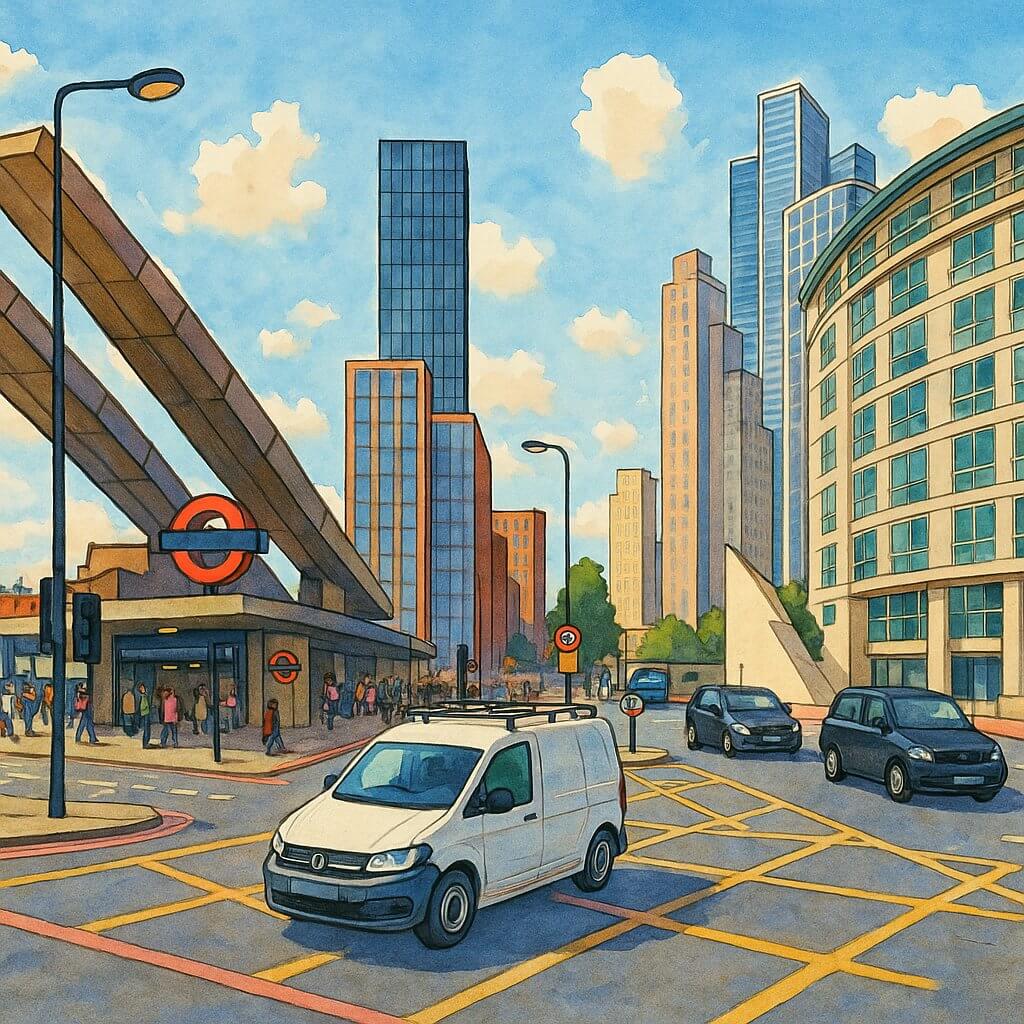
Vauxhall, London
Vauxhall: A Vibrant South London Hub
Discover Vauxhall's Charm: History, Landmarks, and Local Insights
Vauxhall is a lively and dynamic district located in South London, within the borough of Lambeth. Situated on the south bank of the River Thames, it lies just a short distance from central London. Vauxhall is easily accessible from Westminster, which is just across the river to the north, and forms part of the area known as the "Thames Corridor." The district is also a major transport hub, making it an ideal starting point for exploring South London and beyond.What is the Size of Vauxhall and Its Population?
Vauxhall covers a relatively compact area, with a total land size of approximately 2.6 square kilometers. The population of Vauxhall has seen considerable growth in recent years, with a population of around 20,000 people. This vibrant area is increasingly becoming a sought-after place to live, with many young professionals and families moving in due to its excellent transport links and proximity to central London.Map of Vauxhall, London
Major Roads in Vauxhall
Vauxhall is well connected by a number of significant roads. Some of the key thoroughfares in the area include:- Vauxhall Bridge Road: One of the main roads connecting Vauxhall to Westminster and central London.
- South Lambeth Road: A busy route that runs through the heart of Vauxhall, providing access to the surrounding areas.
- Kennington Lane: This road runs through the southern part of Vauxhall and connects the area to nearby Kennington.
The History of Vauxhall: How Did it Get Its Name?
The name "Vauxhall" has its origins in the 16th century. It is believed to derive from "Falkes Hall," a country house owned by a man named Falko de Breaute. In the 13th century, the estate was used as a royal residence. Over time, the area surrounding the hall became known as Vauxhall. The district's connection to the river and its proximity to the city helped establish it as a hub for both industry and leisure.In the 18th century, Vauxhall Gardens became one of London’s most famous pleasure gardens, drawing visitors from across the city and even beyond. The gardens were known for their entertainment, musical performances, and social gatherings. The area continued to evolve throughout the 19th and 20th centuries, gradually transforming from a recreational space into the urban area we know today.
Demographics of Vauxhall
Vauxhall is a diverse and thriving area with a mix of residents from different backgrounds. The population includes a significant proportion of young professionals, students, and creatives. The area’s growing popularity has attracted people from various parts of London and beyond, contributing to a vibrant, multicultural community.The local economy is also diverse, with many businesses catering to the creative industries, hospitality, and technology sectors. Vauxhall’s central location and excellent transport links make it an appealing destination for people looking to live close to central London but in a more affordable and vibrant area.
Important Buildings and Landmarks in Vauxhall
Vauxhall is home to several important buildings and landmarks that are of interest to both locals and tourists:- The Vauxhall Pleasure Gardens: Once a famous entertainment venue, the gardens are now a historic park where visitors can relax and enjoy the green space.
- Vauxhall Bridge: An iconic bridge connecting Vauxhall to Pimlico, which spans the River Thames and offers scenic views of the river and the city skyline.
- The MI6 Building: Known for its striking architecture, the headquarters of the British Secret Intelligence Service is located on the Vauxhall embankment and is a well-known landmark, especially for fans of the James Bond films.

Painting of Vauxhall, London
Characteristics of Vauxhall
Vauxhall is a unique blend of residential, commercial, and leisure spaces. It boasts a dynamic atmosphere, with a mix of modern developments, historic landmarks, and green spaces. The area is characterized by its growing number of high-rise buildings, which have transformed the skyline over the last few decades.The district is also known for its excellent local amenities, including shops, restaurants, bars, and cafes, many of which cater to a diverse crowd. The lively atmosphere is particularly notable on weekends when the area’s markets and outdoor spaces come to life. The nearby Vauxhall Park offers a peaceful escape from the bustling urban environment, providing space for relaxation and recreation.
Real Estate Prices in Vauxhall
Vauxhall has become one of the most desirable places to live in South London, and as such, real estate prices in the area have risen steadily. As of 2025, the average price of property in Vauxhall is approximately £800,000, which is higher than the average for the surrounding Lambeth borough.The cost of property in Vauxhall can vary widely depending on the size and type of property. For example, a two-bedroom flat in the area might cost around £600,000 to £700,000, while larger properties or newly-built apartments in high-rise developments can command prices upwards of £1 million. On average, buyers can expect to pay between £6,000 and £8,000 per square meter in Vauxhall, making it more affordable than areas like Chelsea or Westminster but still on the higher end for South London.
Nearest London Underground Stations and What Lines Serve Them
Vauxhall is extremely well-served by public transport, with several nearby Underground stations:- Vauxhall Station: Served by the Victoria Line and national rail services, providing quick connections to Central London and beyond.
- Kennington Station: Located just south of Vauxhall, this station is served by the Northern Line and provides easy access to areas such as Bank and Camden.